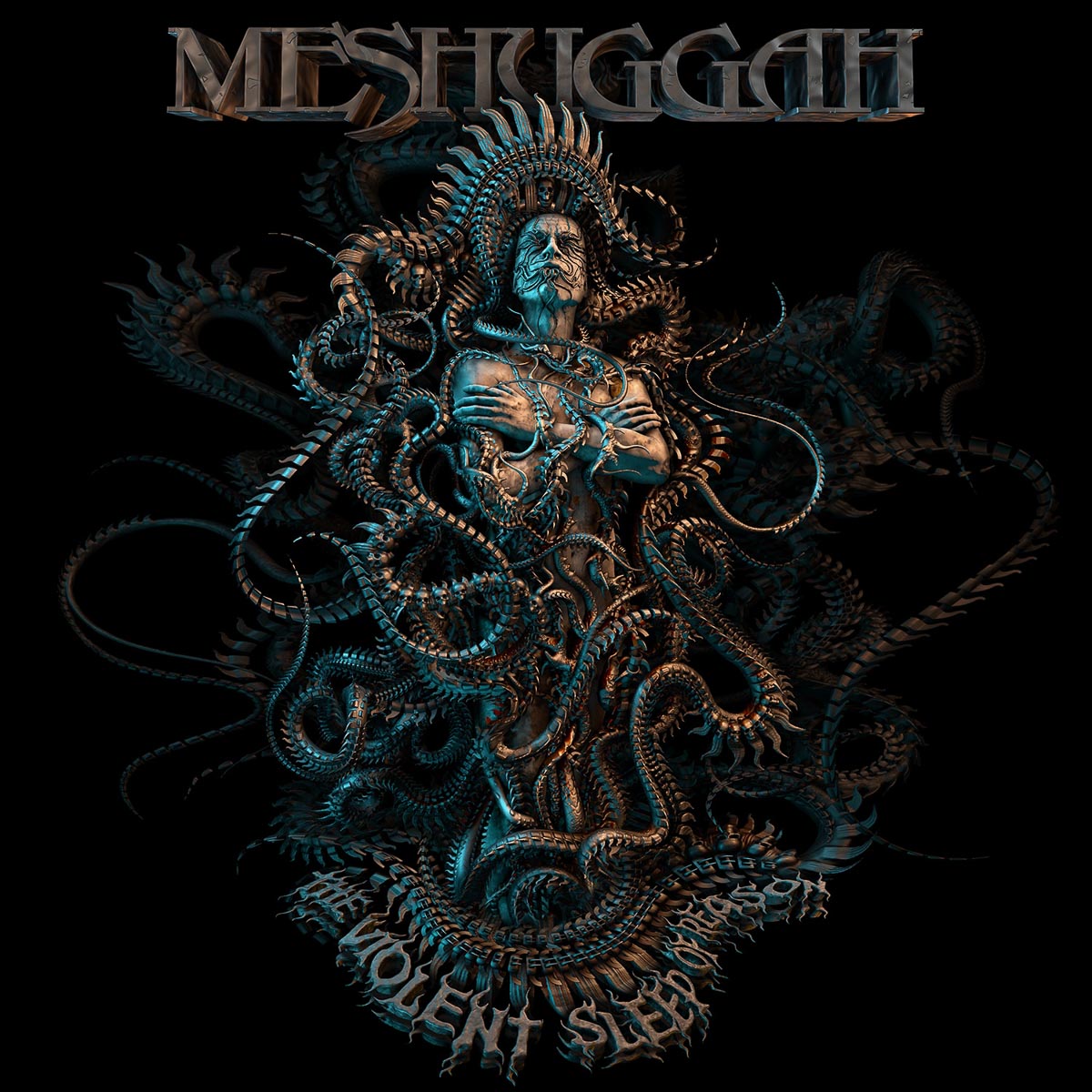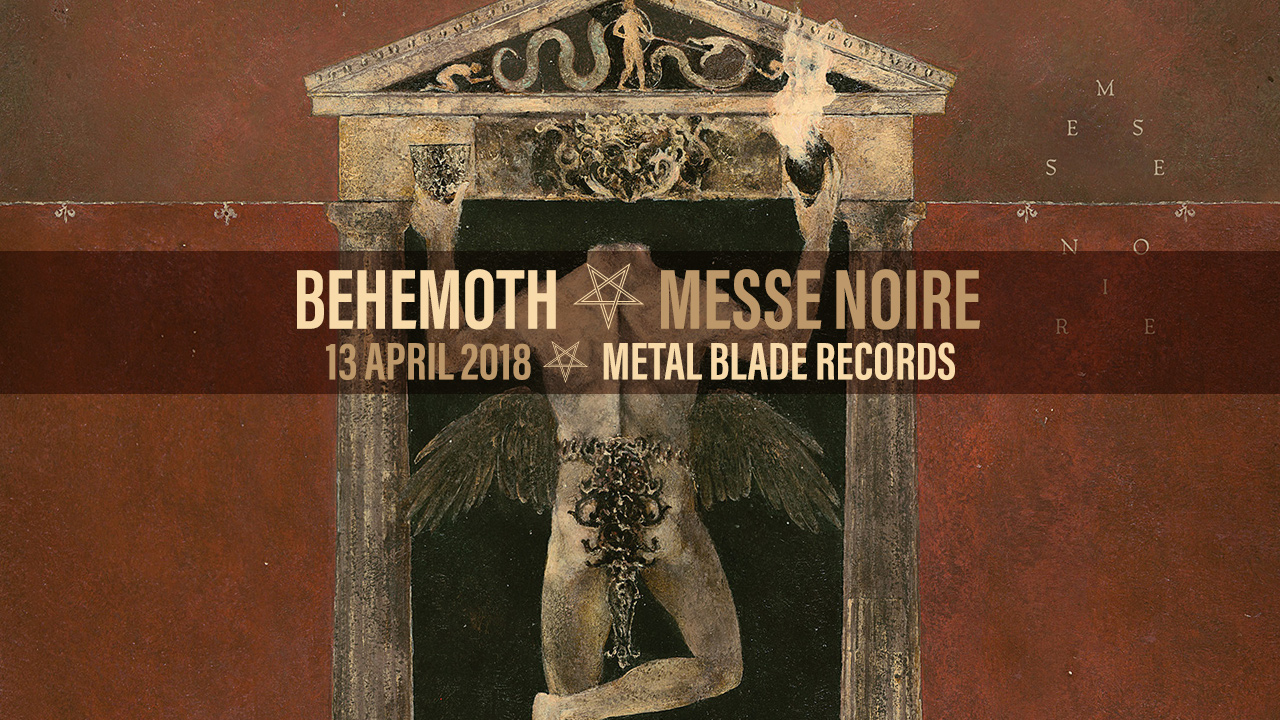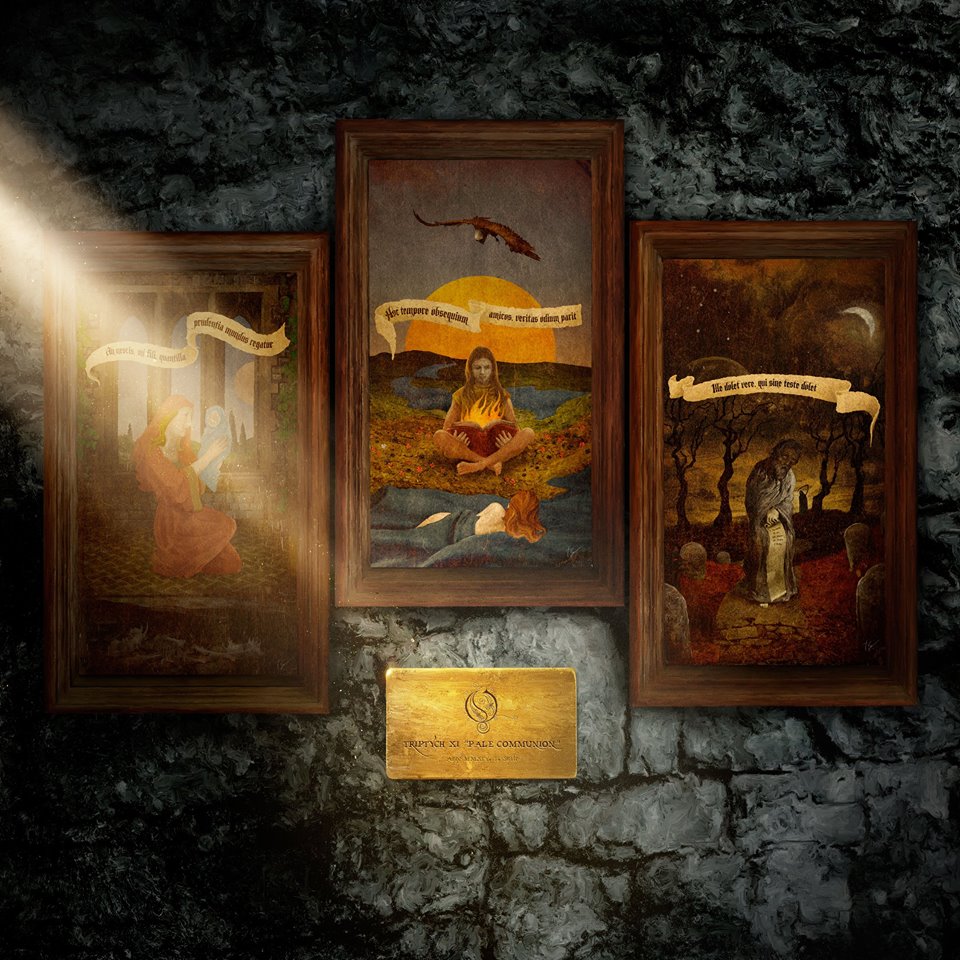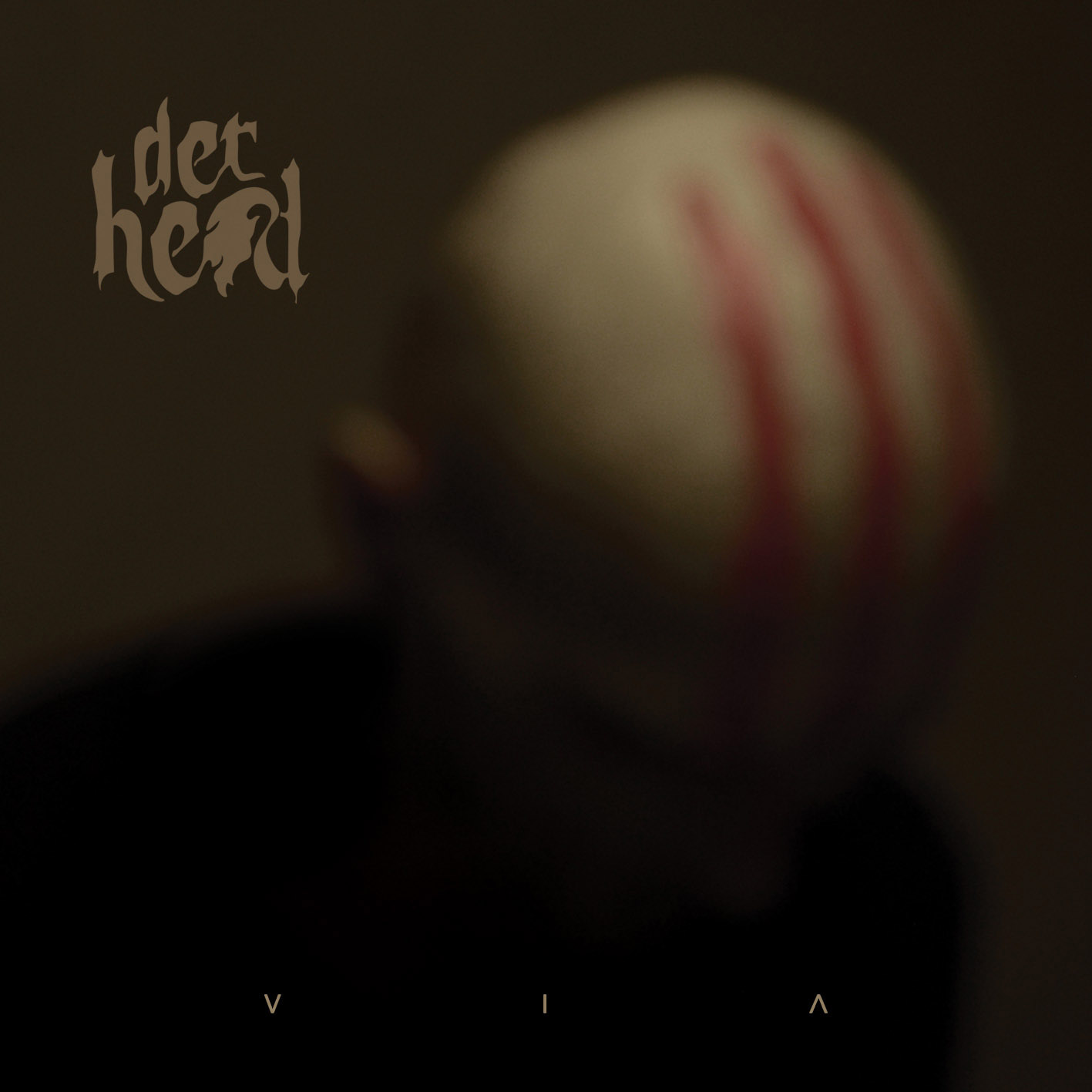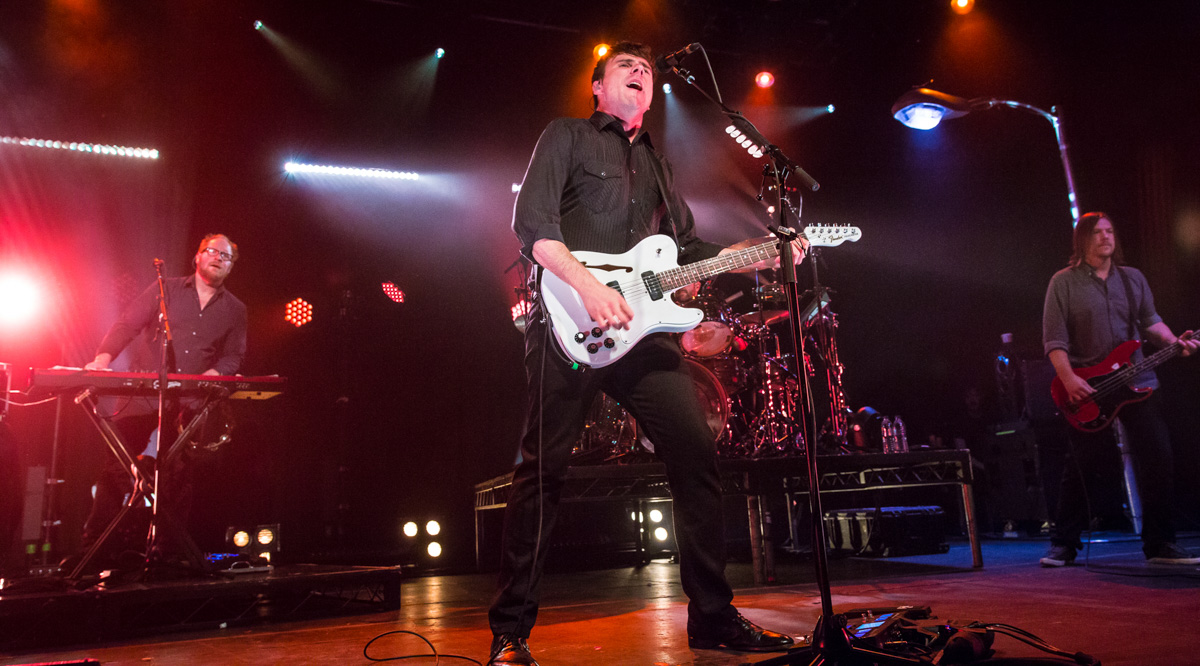Meshuggah‘s greatest strength and greatest weakness both lie in their ability to layer extraordinarily low, complex guitar parts and contrasting drum rhythms. The result is one of the most intense (and to be fair, exhausting) listening experiences available anywhere.
If you’ve heard of Meshuggah, you probably have an opinion on them already, and if you haven’t, you’ll probably be able to form one very quickly. Titans of the extreme metal world, they’ve been churning out thick, technical, skull-crushing, spine-breaking heavy music for a quarter of a century. They’ve even been credited with creating the entire genre of Djent (characterized by rhythmic chugs used almost as an added percussion instrument, a technique pioneered by guitarist Fredrik Thordendal). So when you’re already quite possibly the heaviest band in existence, where do you go? The Violent Sleep Of Reason, Meshuggah‘s seventh full-length, answers that with… well, remaining the heaviest band in existence. [columns] [column size=”1/3″]
Album Title: The Violent Sleep of Reason
Release Date: 07 October 2016
Label: Nuclear Blast
Opener “Clockworks” is an excellent primer on Meshuggah‘s signature sound. The one word that sums up this song (and a lot of other tracks on The Violent Sleep Of Reason) is “lurching”, as the guitars hammer down a rhythm while the drums, centered on Tomas Haake‘s snappy snare, run wild. This “polyrhythm” is a Meshuggah signature, and “Clockworks” makes it sound downright catchy. It gets even more suffocating after the glitchy tapping solo halfway in, with the addition of a high-pitched droning guitar over a djent-meets-thrash riff that takes over. At 7+ minutes, it’s a bold leadoff track, but it works in every way. “Born In Dissonance” features a trademark djent riff, and again Haake proves utterly invaluable, managing to play two rhythms at once; the snare and kick match the guitar chugs, but the crash cymbals create a constant shimmer of sound over it all. The verse has a fun descending scale riff, and the whammy dives on the chorus are so deep it sounds like a whale song. “MonstroCity” provides the album’s best riff, and proves what a debt Stephan Carpenter of Deftones has to Thordendal (both even use 8-string guitars to provide their signature tone). The chorus hook especially is impressive, with an easy to follow riff that doesn’t sacrifice any of the rhythmic complexity or heaviness Meshuggah is known for. The guitar solo in the middle of the song is high-pitched and buzzing, but also familiar: performed by a string section it would sound like it was ripped from a classical composition.
The intro to “By The Ton” features a swirling, unsettling higher lead over a chunky rhythm riff, before cutting out and slamming into a pulverizing verse. There really doesn’t seem to be a chorus, just instrumental breaks that shift and evolve with each subsequent pass. The title track unfolds into another standout polyrhythm and a hammering djent verse riff contrasted with miniature Zakk Wylde styles “squeals”, although they’re played so low they sound like a demonic fly buzzing around your headphones, and the bass rumble anchors the song so that the guitars can play with texture. “Ivory Tower” has a similar descending riff to “Born In Dissonance,” but vocalist Jens Kidman steps up and carries the song with an inspired performance. The Fallujah-esque haunting guitar solo helps the song stand out too, making it one of the album’s best tracks.
“Stifled” is where the album starts to struggle. It has a veritable battery of riffs one after the other, grinding away at close to subsonic frequencies, but despite being a showcase for Thordendal and rhythm guitarist Mårten Hagström, it doesn’t feel very cohesive, and comes across as a dumping ground for good ideas that never made it into other songs. “Nostrum” enters with a ridiculous snare pattern and once again lurches along on the back of a sludge riff. Haake steals the show completely here, but is really the only element of the song that clicks. “Our Rage Won’t Die” is actually a very good, straight-forward metal song (or as close to straight-forward as Meshuggah is capable of), but doesn’t stand out. It’s worth a listen, especially if you enjoy early Soilwork or In Flames, but it’s hard to recommend it over other tracks here. Closing tune “Into Decay” starts off with a fuzzed out rumble that teases the main riff, which comes in on top of the existing distortion. A slow dive riff that recalls early Gojira, and very, very faint orchestration buried in the background make this song far more distinct than the previous 3. It overstays its welcome slightly, but that’s easy to forgive with a riff this strong.
Meshuggah‘s greatest strength and greatest weakness both lie in their ability to layer extraordinarily low, complex guitar parts and contrasting drum rhythms. The result is one of the most intense (and to be fair, exhausting) listening experiences available anywhere. The Violent Sleep Of Reason struggles at times to deliver every element of their massive sound at once (and the sequencing leads to an unfortunate lull near the end), but nearly every song features at least one “WOW” moment. If you think you can handle the relentless grind, give this one a spin. It’s an experience.

